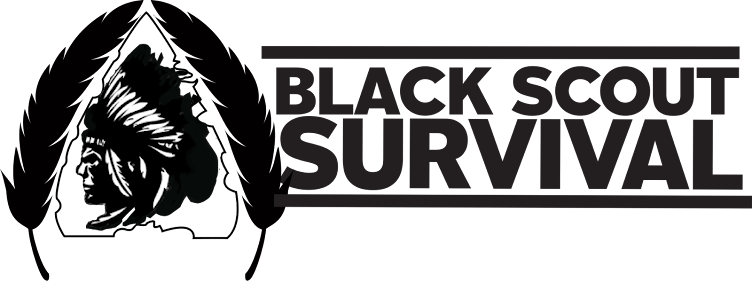In a disaster situation I look at it from a standpoint of needing a kit that combines both military IFAK gear as well as wilderness expedition style kits (similar to expedition guides or wilderness first aid guys). This is my reasoning for my kit.When chaos occurs-gun fights happen and those wounds need to be treated. People in my group may also be using tools that they are unfamiliar with and could cause injury (axes, knives, etc...). I've tried to focus my kit around these circumstances. I will go over my load-out below.
| Notice the Trauma Section is easily identified by the red pull tab. This allows for quick identification when seconds count. |
The two separate sections are divided into two groups:
- Trauma treatment (GSW or gunshot wounds/severe lacerations)
- Expedition Medical (standard injuries and medicine)
TRAUMA SIDE
The trauma side contains the following components:
- Quick Clot Combat Guaze Z-folded (coagulant)
- Sterile Scaplel
- Duct Tape
- Standard Rolled Gauze
- Military Cravat (a.k.a. triangle bandage)
- Israeli Bandage (field dressing)
- H & H Tourniquet
- Sharpie with Medical tape wrapped (good for writing tourniquet times on victim)
- Nitrile Gloves (barrier)
WILDERNESS MEDICINE SIDE
We will now outline the wilderness or standard medicine side. These components remedy common ailments that may be encountered in the field.
A few different types of band-aids are included. This will keep minor wounds protected to facilitate with the healing process and to fight getting the wounds dirty and infected. Minors can become majors without proper care. Moleskin is included for blisters. This is bound to happen to tender footed individuals when humping heavy rucks over unforgiving terrain.
I find it important to include items that can disinfect or cleanse minor wounds. Triple Antibiotic ointments will promote healing and keep you from getting a gnarly infection. I've included BZK Antiseptic wipes because they help with the application of Steri-Strips (a wound closure tape). The Alcohol Prep pads are more for cleansing instruments than wounds. Iodine can be used as an antiseptic and also to purify water if nothing else is available.
For wound closure I've included a Steri-Strip packet. This is the least invasive method of wound closure and it's always recommended to go that route first. In my kit I also include a suture set. Understand that you must have the knowledge and skill set to do this or you may be doing more harm than good.
Med's and Ointments:
- Blistex (aside from lip treatment it can also be used to start fires)
- Sunscreen wipes
- Oral ointment (toothaches)
- Sting Relief wipes
- Burn Free Gel (starting fires in the wilderness can lead to the potential to get burned)
- Hydro-cortisone cream
- Ammonia Inhalants (smelling salts)
- Aspirin, Non-Aspirin, Ibuprofen, Antihistamine, Antacids, Pepto, Anti-diarrheal, and Electrolyte Replacement.
Tools:
- Hemostats
- Bandage Scissors (I prefer them over EMT shears and they are smaller)
- Irrigation Syringe (cleaning wounds)
- Tweezers w/ Magnifying lens
- Streamlight Pen Light
Sterile Gauze:
- Surgical Pads
- Sterile Eye Pad
- Sterile 4x4's and 2x2's
- Non-Stick Pads (good for not reopening wounds by removing the scab when dressings are changed)
Miscellaneous:
- Disposable thermometers
- Laerdal CPR Barrier
- Kerlix wrap
- Elastic bandage
- Insect Repellent (not shown)
As you can see this kit contains a plethora of equipment to handle a variety of situations. These are the items I feel comfortable with and will aid me in a disaster situation when there is no further medical help available (by all means if further medical care is available-seek it out). Build a kit that reflects your skill level. Remember that knowledge is key and it outweighs and gear that you may have. If you have the time I suggest getting whatever level of medical training offered in your area. At the very least look to the American Red Cross for CPR and First Aid training. If someone in your group has a higher level of medical training (i.e. Nurse/Nurse Practitioner/M.D./Surgeon); they should focus their efforts on developing a medical kit for your group.
DISCLAIMER:
The information contained in these topics is not intended nor implied to be a substitute for professional medical advice, it is provided for educational purposes only.
You assume full responsibility for how you choose to use this information.
Always seek the advice of your physician or other qualified healthcare provider before starting any new treatment or discontinuing an existing treatment. Talk with your healthcare provider about any questions you may have regarding a medical condition.
Nothing contained in these topics is intended to be used for medical diagnosis or treatment.




Nice setup with the two separate sides. I would keep a close eye on the alcohol type preps packages since they have a tendency to leak and evaporate. Maybe something to keep them from flexing inside the kit. Who makes the two sided pouch? Thank you.
ReplyDeleteWho makes the pouch you chose?
ReplyDeleteHi there! Nice stuff, do keep me posted when you post again something like this! Erste Hilfe Kurs Siegen
ReplyDelete